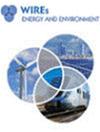Technical and economic challenges for floating offshore wind deployment in Italy and in the Mediterranean Sea
IF 5.4
3区 工程技术
Q2 ENERGY & FUELS
引用次数: 0
Abstract
Offshore wind is nowadays already well developed in the North European countries. Ninety‐nine percent of the offshore wind turbines are installed on fixed foundations in shallow waters. For areas with water depth greater than 50–60 m, the floating wind is the cheapest and mostly used technology. This technology is going to reach the commercial phase in a few years, thus disclosing the potential of all marine areas with deep waters close to the coast, including the Mediterranean basin. One of the main challenges for floating offshore wind deployment in this area is the achievement of its economic feasibility. The offshore wind resource in the Mediterranean is generally lower than the one in the North Sea and in Oceans and the cost of offshore wind farms, especially with floating technology, is higher than the present offshore wind farm installations also because this industrial sector has not yet started in this area. However, in the Mediterranean area, the potential of offshore wind to contribute to the decarbonization pathway and reduce the dependence on imported fuel supply is substantial. Numerous studies, examined in this article, have already performed a technical‐economic assessment of offshore wind farms in different countries and geographical areas within the basin. A significant number of offshore wind projects are already in different stages of development, confirming the industrial interest and readiness of the Mediterranean offshore wind energy sector. The article provides a comprehensive review of various factors influencing the future deployment of offshore wind in the Mediterranean. It covers a range of topics including technology advancements, resource assessment, wind energy potential, ongoing projects, costs, and economic aspects. Additionally, it discusses environmental sustainability, regulatory frameworks, supply chain logistics, and system integration. The updated review presented in this article could assist decision‐makers and stakeholders in gaining a better understanding of the characteristics of this promising sector and accelerating its development.This article is categorized under:在意大利和地中海部署漂浮式海上风力发电所面临的技术和经济挑战
如今,海上风能在北欧国家已经得到了很好的发展。99% 的海上风力涡轮机安装在浅水区的固定地基上。在水深超过 50-60 米的区域,浮动风力是最便宜、最常用的技术。这项技术将在几年内进入商业化阶段,从而揭示包括地中海盆地在内的所有靠近海岸的深水海域的潜力。在这一地区部署浮动式海上风电的主要挑战之一是实现其经济可行性。地中海地区的近海风能资源一般低于北海和大洋,近海风电场的成本,尤其是采用浮动技术的近海风电场的成本,要高于目前的近海风电场装置,这也是因为该地区尚未开始这一工业领域。然而,在地中海地区,近海风能在促进脱碳和减少对进口燃料供应的依赖方面具有巨大潜力。本文探讨的大量研究已经对盆地内不同国家和地理区域的海上风电场进行了技术经济评估。大量近海风能项目已经进入不同的开发阶段,这证明了地中海近海风能行业的产业兴趣和准备程度。文章全面回顾了影响地中海未来海上风能部署的各种因素。文章涉及一系列主题,包括技术进步、资源评估、风能潜力、正在进行的项目、成本和经济方面。此外,文章还讨论了环境可持续性、监管框架、供应链物流和系统集成等问题。本文提供的最新综述有助于决策者和利益相关者更好地了解这一前景广阔行业的特点并加快其发展:可持续能源 > 风能
本文章由计算机程序翻译,如有差异,请以英文原文为准。
求助全文
约1分钟内获得全文
求助全文
来源期刊

Wiley Interdisciplinary Reviews-Energy and Environment
ENERGY & FUELS-
CiteScore
11.70
自引率
3.30%
发文量
42
期刊介绍:
Wiley Interdisciplinary Reviews: Energy and Environmentis a new type of review journal covering all aspects of energy technology, security and environmental impact.
Energy is one of the most critical resources for the welfare and prosperity of society. It also causes adverse environmental and societal effects, notably climate change which is the severest global problem in the modern age. Finding satisfactory solutions to the challenges ahead will need a linking of energy technology innovations, security, energy poverty, and environmental and climate impacts. The broad scope of energy issues demands collaboration between different disciplines of science and technology, and strong interaction between engineering, physical and life scientists, economists, sociologists and policy-makers.
 求助内容:
求助内容: 应助结果提醒方式:
应助结果提醒方式:


